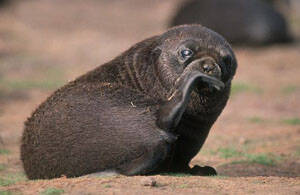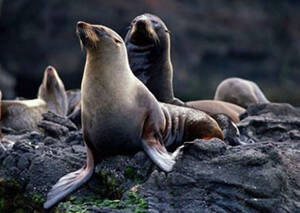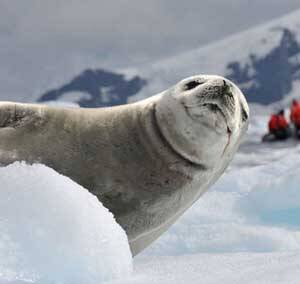
Zalophus californianus
Zalophus californianus,Californian Sea Lion
Californian Sea Lion (scientific name: Zalophus californianus), foreign name···

Australian sea lion
Neophoca cinerea
The scientific name of the Australian sea lion is Neophoca cinerea, and its ···

Arctocephalus tropicalis
Arctocephalus tropicalis,Antarctic fur seal
This is a Northern fur sea lion (scientific name: Arctocephalus tropicalis) ···

Arctocephalus townsendi
Arctocephalus townsendi,Paw Island fur seal, Paw Dalupe sea lion
The North American fur sea lion (Arctocephalus townsendi) is the only sea li···

New Zealand sea lion
Phocarctos hookeri
The scientific name of New Zealand sea lion is Phocarctos hookeri, also know···

Arctocephalus philippii
Arctocephalus philippii,Chilean fur sea lion
The scientific name of the Hoo Island fur seal is Arctocephalus philippii. I···

Arctocephalus pusillus
Arctocephalus pusillus,South African and Australian Fur Seal,Cape fur seal, African fur sea lion, South African fur sea lion, Australian fur sea lion
The scientific name of the African fur seal is Arctocephalus pusillus, and i···

Arctocephalus forsteri
Arctocephalus forsteri,New Zealand sea lion, New Zealand fur seal, New Zealand fur seal
New Zealand fur seals (Arctocephalus forsteri) mainly feed on squid, octopus···

Arctocephalus gazella
Arctocephalus gazella,Kerguelen Fur seal,Island sea lions, sea wolves, Antarctic fur seals
The Antarctic fur seal (scientific name: Arctocephalus gazella) is called Ke···

Arctocephalus galapagoensis
Arctocephalus galapagoensis,Bear Headed,Galapagos fur seal, Equatorial fur sea lion, Galapagos sea lion, Galapagos sea lion, Galapagos Islands sea lion
Galapagos fur seal (Arctocephalus galapagoensis): Its Greek name, Bear Heade···

Leptonychotes weddellii
Leptonychotes weddellii,monk seal, Weddell seal, Weddell seal, Weddell seal
Weddell seal (Latin name: Leptonychotes weddellii), also known as Weddell se···

Monachus monachus
Monachus monachus,Mediterranean monk sea,Monk seal
The scientific name of the Mediterranean monk seal is Monachus monachus, and···

Mirounga leonina
Mirounga leonina,Southern elephant-seal
The scientific name of the Southern elephant seal is Mirounga leonina, and i···

Mirounga angustirostris
Mirounga angustirostris,Northern elephant-seal,Northern elephant seal
The scientific name of the Northern elephant seal is Mirounga angustirostris···

Lobodon carcinophagus
Lobodon carcinophagus,Crabeater seal
Sawtooth seals are called Lobodon carcinophagus in scientific name and Crabe···

Hydrurga leptonyx
Hydrurga leptonyx,leopard seal,
Leopard seal (scientific name: Hydrurga leptonyx) is also known as leopard s···

Halichoerus grypus
Halichoerus grypus,Grey seal,Atlantic grey seal
Grey seal (scientific name: Halichoerus grypus) is a large seal in the famil···

Cystophora cristata
Cystophora cristata,Hooded seal
Hooded seal (scientific name: Cystophora cristata) is also known as Hooded s···

Phoca vitulina
Phoca vitulina ,Common seal
The scientific name of the harbor seal is Phoca vitulina (Linnaeus, 1758), a···

Phoca sibirica
Phoca sibirica,Baikal Seal,Siberian seal, freshwater seal
Baikal Seal (Phoca sibirica), also known as Baikal Seal in English, lives in···

Phoca hispida
Phoca hispida,Ringed seal,Nordic seal, ice seal, ring seal
The scientific name of the ringed seal is Phoca hispida, and its foreign nam···
